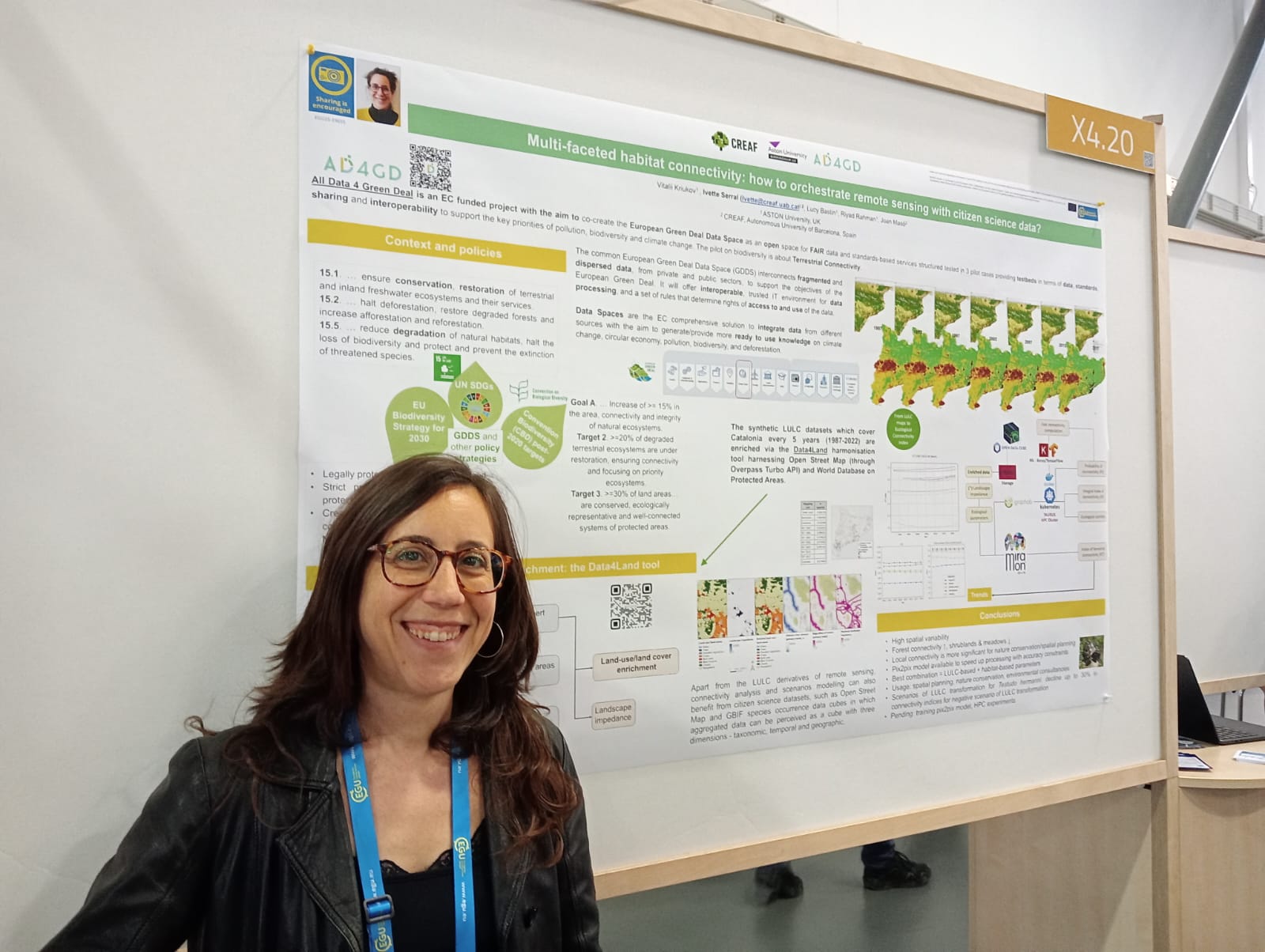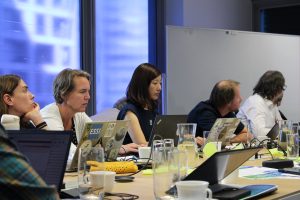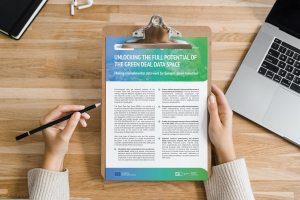
Ivette Seral (CREAF) during the EGU in front of the AD4GD poster.
The AD4GD team has returned from a busy and productive week at the European Geosciences Union (EGU) General Assembly 2025 in Vienna. As one of the largest gatherings in the geosciences, it was the perfect venue for us to share our latest research and connect with the global scientific community. We were involved in several poster presentations, showcasing the depth and breadth of our work on the Green Deal Data Space.
Our Presentations at EGU25
Throughout the week, our team presented key aspects of the AD4GD project, highlighting our innovative approaches to data integration and semantic interoperability.
Multi-faceted Habitat Connectivity
On Tuesday, Ivette Serral presented a poster on “Multi-faceted habitat connectivity: how to orchestrate remote sensing with citizen science data?” This work, co-authored with Vitalii Kryukov, Lucy Bastin, Riyad Rahman, and Joan Masó, explored methods for combining diverse data sources to create a more complete picture of ecosystem health. The session sparked interesting discussions on the power of integrating community-sourced data with traditional remote sensing.
Simplifying Data with Tables
On Thursday, our project coordinator Joan Masó presented “Tables as a way to deal with a variety of data formats and APIs in data spaces.” This poster detailed a practical solution for managing the complexity of heterogeneous data within data spaces. The core idea is that by simplifying data into tabular formats, we can significantly improve interoperability. This work was a collaboration with Marta Olivé, Alba Brobia, Nuria Julia, Nuria Castell, and Uta Wehn.
Essential Variables and the Green Deal Data Space
To cap off the week, Ivette Serral presented another poster on Friday, this time on “Essential Variables as a semantic interoperability solution for the Green Deal Data Space.” This presentation focused on how using Essential Variables (EVs) can provide a common language to help different datasets “speak” to each other. This is a crucial step for building a functional and effective data space for environmental applications.
We were thrilled with the engagement and feedback received during our sessions and look forward to continuing these important conversations. Thank you to everyone who stopped by our posters!





